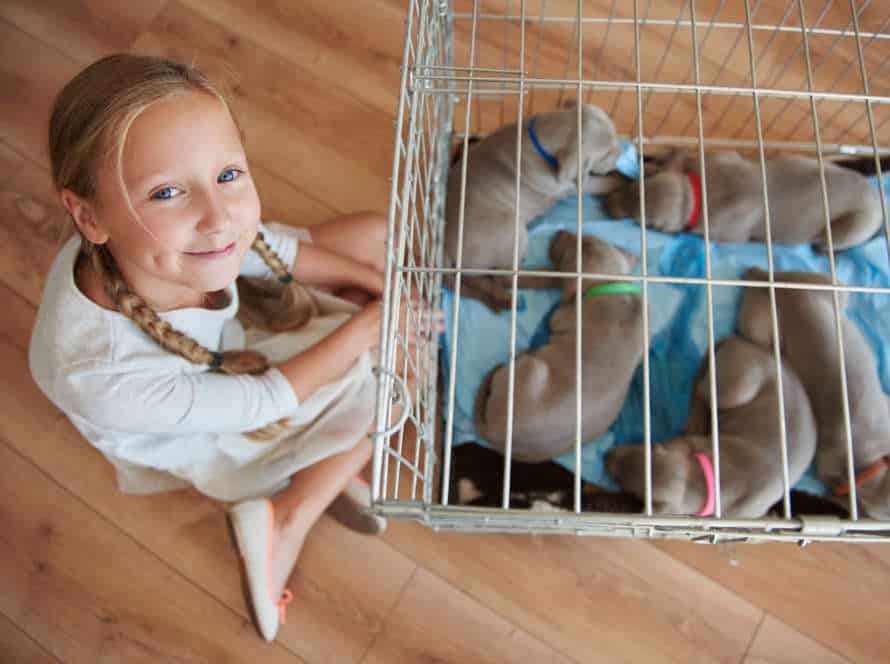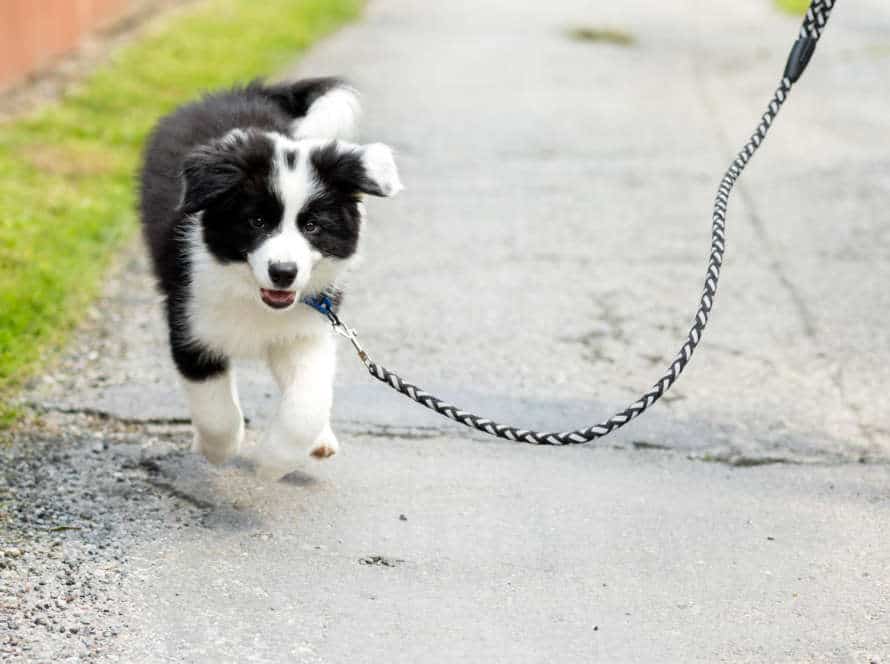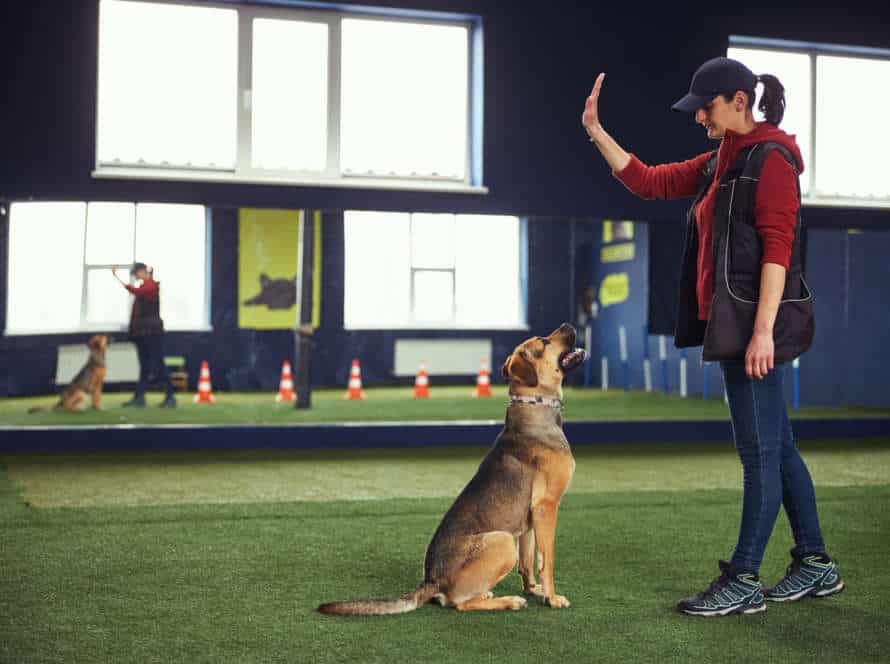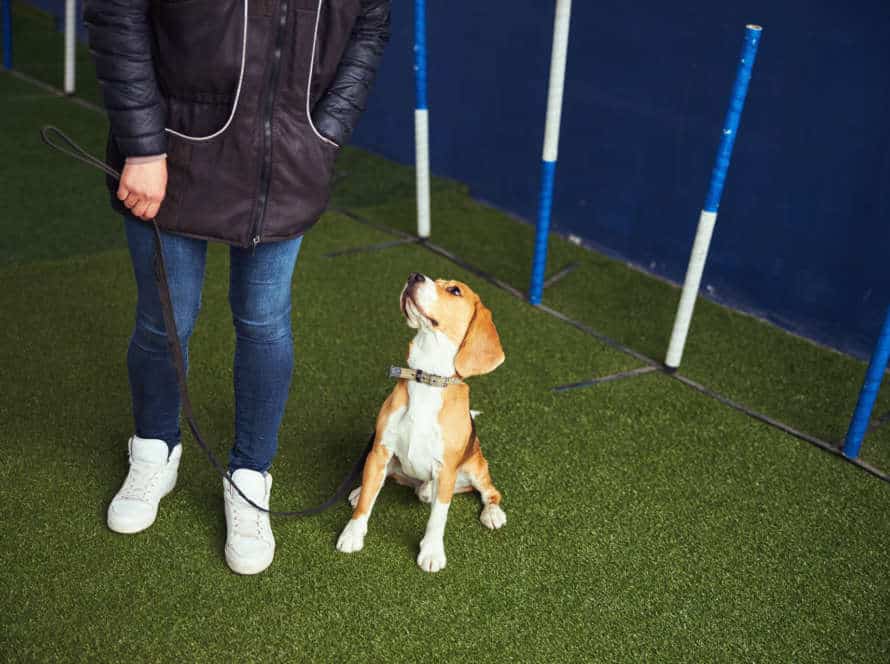Training Your Dog to Heel in Different Situations and Environments
Heeling is an essential command to teach your pup. It helps maintain control & cooperative behaviour in various scenarios. Here’s how to train your doggo to heel:
- Start with simple indoor sessions.
- Put a leash on your pup’s collar and take them to a peaceful room with no disturbances.
- Stand by their left side, and give a verbal cue like “heel” or “let’s walk“.
- Start walking with them and give them a reward when they’re one foot away from your leg.
- Gradually move to more distracting settings.
- Whenever they lose focus, use a verbal cue to get their attention & restart the session.
- Practising regularly and being patient will help your pup learn how to heel in all kinds of environments.
Basic Heel Training
Training a pup to heel is vital. Heeling means following close to the handler’s left and matching their pace. Knowing how to heel helps your pup respond quickly and effectively in different settings. Here’s an outline to get basic heeling training underway with your pup.
Teach your dog to heel with treats
Teaching your pup to heel with treats is essential for basic training. This ensures your dog walks calmly next to you in any situation. Here’s how:
- Select a training spot with minimal distractions and a tranquil atmosphere.
- Hold a treat near your pup’s nose and move it slowly towards you. This will cause your dog to walk beside you.
- Say “heel” and reward your pup with the treat when it is at your leg, looking up at you.
- Do this exercise regularly, gradually increasing the distance between you and your pup in more challenging settings, such as with more distractions or other dogs around.
- Stay patient and consistent and your pup will learn to heel calmly. This makes walking more enjoyable.
Tip: Always reward your pup with positive reinforcement (treats, praise, or toys). Avoid harsh punishments or negative reinforcement which can weaken the trust and lead to aggressive behavior.
Practice heel training in quiet indoor settings
Heel training is key for obedient dogs. To succeed in different settings, practice in quiet indoor places. Here’s how:
- Start with 10-15 minute sessions.
- Use treats or toys to lure your pup next to your left leg.
- Verbal cues like “heel” and “good” help.
- Reward your pup when they follow your lead.
- Stay upright, shoulders relaxed and gaze forward.
- Challenge them more by adding distractions, changing directions, walking faster or slower.
Pro tip: Always end positively with praise and a treat! This reinforces the desired behavior from your pup.
Practice heel training outdoors with minor distractions
Heel training is key for all dog owners. But, only training indoors won’t work for outdoors, with distractions. Training outside with minor distractions is the way to go for better obedience. Here are some tips:
- Pick a quiet outdoor spot with few people.
- Make it fun with positive reinforcement.
- Add distractions slowly – like people, other dogs, cars, and noises.
- Use a short leash or body harness to control your pup.
- Practice often and reward them with treats and praise when they behave!
Pro Tip: Be patient and practice in many settings, gradually increasing the distractions.
Advanced Heel Training
Training your pup to stay by your side can be tough, yet super satisfying! Advanced heel training is teaching Fido to stay in the heel position even in distracting places and while dealing with lots of other tasks. Here, we’ll go over the various ways to coach your dog to stay close in difficult scenarios.
Use a long leash for off-leash heel training
Long leashes are great for off-leash heel training. Here’s how to do it:
- Use a 15-30ft lightweight leash (e.g. nylon).
- Start in a low-distraction area. Walk with your dog on your left side.
- Say “heel” and start walking. Use treats/praise for good behavior.
- Gradually increase speed and add distractions (e.g. other dogs).
- Give verbal praise/treats if your dog follows the lead.
- Train in different outdoor environments to reinforce the behavior.
Positive reinforcement and rewards are key for successful training.
Introduce different environments, such as busy streets, parks, and beaches
Train your pup to follow at heel in multiple places with advanced training. Busy streets, parks and beaches give new distractions, so obedience will be key! Here are some tips:
- Start in a quiet spot they know.
- Use treats and praise.
- Slowly add distractions like people, cars and other dogs.
- Mix up the places you train them – busy streets, parks, the beach.
- Always use a leash for safety.
With practice and consistency, you and your fam can explore and have fun together!
Add distractions to the environment, such as a ball or other dogs
When it comes to advanced heel training, distractions can help. For example, a ball or even other dogs. Introduce them too soon though, and your pup could fail. Here’s how to incorporate them:
- Start in a low distraction environment- like your yard or a quiet park.
- Increase the level of distractions slowly- start with a ball, then add people or other dogs.
- Go at your dog’s pace- make sure they’re comfortable before adding more.
- Praise and reward when they heel despite distractions.
With patience and practice, your dog will be good to go in any setting!
Troubleshooting Heel Training
Learning with your pup? Sometimes it can be tricky for them to heel in certain environments and situations. Let’s look at common issues. How do we tackle them? Troubleshoot any obstacles? Adjusting training depending on the environment? Yup, we can do that!
Address resistance or lack of response to heel commands
Is your pup resisting heel commands during training? Don’t worry! Follow these tips to get back on track.
- Evaluate behavior – identify cause of resistance.
- Positive reinforcement – treats, praise, clicker.
- Practice in different situations & environments.
- Shorter leash – more control, discourage pulling.
- Break training into smaller steps – master each one before moving on.
By doing this, you’ll have a successful training experience with your furry friend.
Correct unwanted behaviors, such as pulling or zigzagging
Training your pup to heel is a must-have skill! It needs patience, practice and consistency. But, sometimes dogs can create bad habits like pulling or zigzagging. To fix this, try troubleshooting the training process. Here’s how:
- Start in a low-distraction, quiet place.
- Use treats or praise for good behaviour.
- Keep a short, loose leash to avoid tension.
- Use verbal cues like “heel” or “let’s go”.
- If pup pulls or zigzags, stop and use a firm yet calm voice.
- Gradually increase distractions and duration.
With patience and consistency, you can train your pup to heel and correct any unwanted behaviours.
Reinforce appropriate behaviors and adjust your training techniques accordingly
It’s essential to reinforce good behaviors and adjust training techniques when you’re trying to teach your dog to heel in varied situations and environments. Here are some tips to help you out:
- Be consistent. Use the same command and cue words each time.
- Start off inside, in a peaceful spot with no interruptions. Then, step up the difficulty level by taking your pup outside and introducing them to noises and aromas.
- Positive reinforcement works wonders! Give them treats, compliments and playtime when they obey the heel command.
- Be flexible with your techniques. If your dog keeps failing to heel in certain circumstances, break down the task into simpler steps, and slowly work up to the full command.
By reinforcing good behavior and adapting your training, you’ll help your pup master the heel command, as well as strengthen your bond with them.
Frequently Asked Questions
1. What is the best age to start training my dog to heel?
It is best to start training your dog to heel as early as possible, ideally when they are puppies. However, it’s never too late to start training them even if they are older.
2. What are some strategies I can use to train my dog to heel in different environments?
Practice makes perfect, so ensure that you train your pup in different environments and situations. Start with less distracting environments such as your backyard, and gradually work your way up to busier locations such as parks or streets. Use treats and positive reinforcement to encourage good behavior.
3. Can I use a harness or a leash for training my dog to heel?
Yes, a leash and collar or a harness can be beneficial when teaching your dog to heel. Ensure that the collar or harness is properly fitted, and use positive reinforcement when your dog follows your lead.
4. What do I do when my dog pulls on the leash instead of heeling?
If your dog pulls on the leash, stop walking and wait for them to calm down. Once they do, continue walking and rewarding them for staying by your side. Consider using a different type of leash, such as a no-pull harness, to prevent pulling.
5. Can professional dog trainers help me train my dog to heel?
Yes, a professional dog trainer can be an excellent resource for helping train your dog to heel. They can provide expert guidance on training techniques and offer suggestions for addressing any specific issues your dog may have.
6. How long does it typically take to train a dog to heel?
The length of time it takes to train your dog to heel can vary depending on their age, temperament, and the amount of time and consistency you put into training. Some dogs may pick up the skill in a matter of days, while others may take a few weeks or even months.







